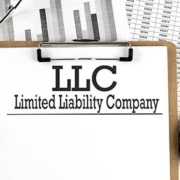Don’t Have a Retirement Plan? Maybe an SEP Is the Answer
- What is an SEP?
- Learn about contribution limits.
- Find out more about employee coverage requirements.
- Discover how to establish an SEP.
- Learn about SEP distributions.
Like many small business owners, you probably find yourself very busy in the wake of the COVID slowdown and are getting back up to speed. But don’t forget about your future.
There are a number of retirement plans available, including Keogh plans and 401(k)s. However, Fiducial thinks you should think about a simplified employee pension plan (SEP). It may be your best option.
How SEPs works
So, why do we consider a SEP “simplified”? Because its retirement contributions go into a traditional IRA account under the control of the SEP participant. This eliminates most of the employer’s administrative duties. For this reason, we sometimes refer to these plans as SEP-IRAs.
SEPs function much like Keogh retirement plans, and they allow tax-deductible contributions for both employees and self-employed individuals. For an employee, the maximum contribution for 2021 is the lesser of 25% of that employee’s compensation or $58,000. These contributions are excluded from the employees’ wages and not subject to withholding for income tax or FICA.
A self-employed person can contribute 25% of his or her compensation after deducting the employer’s contribution, which boils down to the smaller of 20% of the business’ net profit or $58,000. Each year, the employer can specify a compensation amount between zero and 25% (not exceeding the maximums for the year).

Small businesses and start-ups
SEPs are a great option for startups and other small businesses that have unpredictable income and that may be leery of the long-term contribution matches required with other types of retirement plans.
SEPs are also a great option for self-employed individuals with no employees, as the contributions are based upon net profits. This allows the business owner to select the maximum percentage while knowing that the required contribution will be small in low-income years.
Except for when employees are covered by collective bargaining agreements, an employer that elects to make an SEP contribution for the year must contribute to an employee’s SEP-IRA if the employee is at least 21 years of age, has worked for the employer in at least three of the prior five calendar years, and for 2021 has compensation of at least $650.
The compensation floor is subject to inflation adjustment annually and had been $600 from 2015 through 2020.
Another advantage of SEP plans: Participants may continue to contribute after the account owner has reached the age of 72 and must begin taking required minimum distributions from the plan.
As with all traditional IRAs and qualified plans, distributions from an SEP are taxable. They also have a 10% early withdrawal penalty if funds account owners withdraw funds before age 59½.
How to set up an SEP
An SEP-IRA must be set up by or for each eligible employee. Employers may set up plans with banks, insurance companies, or other qualified financial institutions. When setting up an SEP plan, you can adopt the IRS model plan by using Form 5305-SEP. You may also adopt whatever plan is offered by the financial institution with whom you do business.
The latter is the better option to ensure that you meet all plan requirements. If using a financial institution’s plan, be sure to discuss the plan’s fees.
An SEP can be established and funded up to the due date of the business’ income tax return – even up to the extended due date.
A SEP may be the best option for your business’s retirement plan. Want more information on how an SEP plan might work for your particular business structure or determine whether other options should be considered? Call Fiducial at 1-866-FIDUCIAL or make an appointment at one of our office locations to discuss your situation.
Ready to book an appointment now? Click here. Know someone who might need our services? We love referrals!
For more small business COVID-19 resources, visit Fiducial’s Coronavirus Update Center to find information on SBA loans, tax updates, the Paycheck Protection Program, paid sick and family leave.









